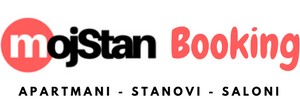On the occasion of the start of the campaign named "Stop Intellectual Property Theft!", a press conference was held at the Republika Srpska Inspectorate on 17. October, 2011.
The campaign is led by the Republika Srpska Inspectorate in cooperation with the General Secretariat of the Republika Srpska Government, with support of the USAID project "Intellectual Property Rights".
There are several solutions to our employers, in this article please carefully consider this proposal.
Making the switch from Windows to Linux will incur some costs as employees and support staff adjust to the new system's configuration settings, utilities, and applications. Even so, the savings in future hardware and software upgrades could be huge.
No License, No Fee, No Problem
Though you can purchase boxed commercial versions of Linux that include support, every Linux distribution is also available for free under the terms of the open-source Gnu General Public License, or GPL. Once you figure out which distribution you'd like to use (see below), you can simply download, burn, and install it on as many systems as you choose. Your software licensing fee is zero, compared with the $300 per seat for the full version of Windows Business Edition. And, another bonus, Linux lacks Microsoft's intrusive activation requirements.
In addition to thousands of other free applications, most Linux distributions come with a copy of LibreOffice.org. Though not a feature-for-feature substitute for Microsoft Office, LibreOffice.org definitely does the job, and for $500 less per workstation than the cost of Office Professional 2013. LibrenOffice.org lacks an equivalent to Microsoft Outlook, but just about every Linux distribution includes Novell's free Evolution PIM.
A few key Windows-based applications such as AutoCAD and Photoshop lack Linux replacements, but for many office workers the missing functionality hardly merits spending $800 more for Windows and Office. Many Windows applications will run at native speed under Linux via the Wine utility included with most distributions. For those that don't work with Wine, two more options exist: You can install a copy of Windows using one of the available free virtualization utilities, such as KVM (Kernel-based Virtual Machine, built into the Linux kernel) or VMWare Server, or you can install Linux to dual-boot with Windows.
For most distributions, the same disc will contain server applications, including the Apache Web Server, the MySQL database engine, virtualization, and support for leading commercial databases and CRM applications from companies like Oracle, Sybase, and SAP. The Samba networking software emulates Windows Server's networking features admirably, and for free, versus Windows Server 2012's starting price of $999. You can even replace your costly Exchange server installation with the free, open-source Zimbra Collaboration Suite.
Whether you're using desktop or server versions of Linux, the operating system is famous for one other important feature that Microsoft is still gradually adding to Windows: security. Linux is not somehow magically immune to viruses, worms, and other Internet-based attacks. However, the reality is that the vast majority of existing attacks target Windows and Windows applications. Mostly by design, Linux is simply not subject to most of the Internet-based malware that threatens PCs. The overwhelming majority of malware targets Windows.
Don't Panic at the Distro
No two Linux distributions are the same, differing mainly in how user-friendly their installers are, how willing they are to include experimental or nonstable versions of software and utilities, and how they offer access to updates.
The two most popular Linux window managers, the software that controls the look and behavior of the X Window graphical user interface, are Gnome and KDE. Most distributions default to installing one or the other--Ubuntu opts for the former, for example, and OpenSuSE, the latter. However, you could install both window managers (and dozens more) on your system, and choose which to use when you log in. Several window managers, notably Xfce and Blackbox, require less memory and graphics processing than Gnome and KDE, making them a good choice for older hardware. Lightweight Linux distributions, such as Puppy Linux, prune the OS down to its elements, breathing life into even the most ancient PC.
Linux distributions also differ in how well they support your particular hardware, especially wireless networking devices and display adapters. Perhaps the easiest way to directly assess this support on your particular hardware without having to actually install Linux is to download, burn, and boot a live-CD distro. Ubuntu, OpenSuSE, Gentoo, and literally hundreds of other Linux distributions come in live-CD versions.
Get Help, If You Need It
The reality of operating system support is that it costs a lot of money, whether it comes from Microsoft, Apple, Novell, or Canonical. Your copy of Windows 7 comes with 90 days of technical support via phone, e-mail, or chat that starts the day you activate the product. After that, Microsoft charges $60 per support incident.
Commercial Linux distributions offer similar, but less expensive, support options. The $60 packaged version of Novell's community-supported OpenSuSE 11.0 comes with 90 days of installation support. For long-term support, choose SuSE Linux Enterprise Desktop (currently in version 10) for $50 per year, or go with Ubuntu and buy a support contract from maker Canonical starting at $250 per year.
If you're already doing without dedicated support staff for Windows, one year may be all the paid support you need for Linux. Ubuntu users joke that simply googling for technical support usually results in the exact answer you're looking for on Canonical's forums.
Linux is different from Windows, but it isn't an alien life form. The human investment you make in transitioning away from expensive Windows and Office licenses may pay for itself quickly. More important, you'll be free to run the desktop and server software of your choice, on hardware you can afford.
Ubuntu goes mobile, expect it on phones, tablets and TVs
At the Ubuntu Developer Summit running this week in Orlando, Shuttleworth is expected to outline plans to expand Ubuntu's reach on to mobile platforms and into the living room. This will happen once 14.04 is out the door and Unity has had its final update to make it as stable and user-friendly as possible. 14.04.2 LTS is the next Long Term Support (LTS) version, which has seen support extended to 5 years making it the perfect time to relocate development resources elsewhere.
Even though we are only officially hearing about this decision today, it turns out that making the move to mobile isn't a new idea. Canonical has been talking to hardware partners for 18 months, and Unity is a key part of making the jump by offering a familiar interface across all devices.
The plan for the moment is to fully support ARM and include the open source code created for mobile devices into the main Ubuntu distribution as and when it becomes available. When we'll see Ubuntu shipping on a device is unknown, but it's unlikely Canonical will be able to manage it before the end of 2019.





